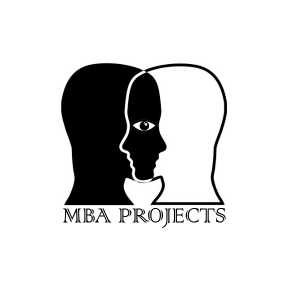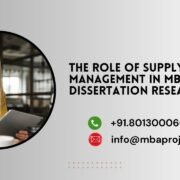SCOPUS journal writing help in Rovira i Virgili University
SCOPUS journal writing help in Rovira i Virgili University
SCOPUS journal writing help in Rovira i Virgili University. Publishing a SCOPUS-indexed research paper is one of the most prestigious accomplishments for any researcher, PhD candidate, or faculty member. For scholars at the Rovira i Virgili University (URV) in Tarragona, Spain, achieving publication in a SCOPUS-listed journal not only enhances academic credibility but also strengthens the university’s research visibility on a global scale. Our specialized SCOPUS journal writing help for Rovira i Virgili University offers expert guidance, editorial precision, and complete support through every step of the publication process — from research conception to journal acceptance.
The Importance of SCOPUS Publication for Rovira i Virgili University Researchers
Rovira i Virgili University is recognized for its innovative and interdisciplinary approach to research in areas such as engineering, chemistry, business management, social sciences, humanities, and health sciences. Publishing in SCOPUS-indexed journals allows URV researchers to share their findings with the international academic community and contribute to high-impact global research.
Key advantages of publishing in SCOPUS journals include:
-
International visibility for your research and scholarly profile
-
Increased citation count and research impact
-
Eligibility for academic promotions, grants, and collaborations
-
Compliance with PhD and postdoctoral publication requirements
-
Contribution to URV’s research excellence and institutional ranking
By publishing in SCOPUS-indexed journals, scholars at Rovira i Virgili University can ensure their research gains recognition, credibility, and long-term influence.
Comprehensive SCOPUS Journal Writing Help for Rovira i Virgili University
Our service provides end-to-end SCOPUS publication assistance customized for students, faculty, and researchers at Rovira i Virgili University. We help you navigate the complexities of academic writing, journal formatting, and publication strategy with expert precision.
1. Research Topic Selection and Conceptualization
Selecting a research topic that aligns with both academic value and publication potential is crucial. Our experts assist in identifying emerging research trends and defining clear, impactful research questions. We ensure that your chosen topic fills a genuine research gap and matches the scope of leading SCOPUS-indexed journals.
2. In-Depth Literature Review and Theoretical Framework Development
A well-written literature review strengthens the foundation of your research. We conduct a systematic review of SCOPUS-indexed papers, synthesizing prior studies to build a solid theoretical and conceptual framework. Our approach ensures academic rigor and highlights the originality of your study within your discipline.
3. Research Design, Methodology, and Data Analysis
We provide expert guidance in designing robust research methodologies. Whether your research is quantitative, qualitative, or mixed-method, our team helps you choose suitable analytical tools such as SPSS, STATA, AMOS, or NVivo. We ensure your methodology meets the scientific and ethical standards required for SCOPUS publication.
4. Manuscript Writing and Structuring
Our academic writers prepare publication-ready manuscripts following journal-specific guidelines and formatting requirements. Each paper is crafted with clarity, coherence, and academic precision, ensuring that it meets the expectations of international peer reviewers.
Detailed Assistance for Every Section of Your SCOPUS Paper
We provide expert writing support for every section of your paper to ensure excellence throughout:
-
Abstract: Concise summary reflecting the novelty and contribution of your research
-
Introduction: Clear explanation of research objectives and significance
-
Literature Review: Analytical and critical review of existing SCOPUS-indexed studies
-
Methodology: Transparent and reproducible research design explanation
-
Results and Discussion: Logical interpretation of findings supported by data
-
Conclusion and Future Work: Insightful synthesis and recommendations
Our team ensures every section meets the academic and formatting standards of both the University of Rovira i Virgili and SCOPUS-indexed journals.
Journal Selection and Submission Support
Selecting the right SCOPUS-indexed journal is a key strategic step. Our specialists identify journals that are most compatible with your topic based on:
-
Scope, impact factor, and audience relevance
-
Acceptance rate and review timeline
-
Reputation of the publisher (Elsevier, Springer, Wiley, Taylor & Francis, etc.)
-
Indexing verification on SCOPUS and SCImago Journal Rank (SJR)
We also help you prepare all submission materials — cover letter, declaration forms, copyright statements, and ethics approvals — ensuring a smooth submission process.
Editing, Proofreading, and Plagiarism Checking
A SCOPUS paper must be grammatically flawless and original. Our editors perform multi-layered proofreading to improve readability, coherence, and academic tone.
We provide:
-
Technical editing for structure and content flow
-
Language polishing for clarity and style consistency
-
Turnitin or iThenticate plagiarism reports for originality assurance
This ensures that your manuscript meets international publication standards and adheres to URV’s ethical guidelines.
Peer Review and Revision Assistance
Receiving peer review feedback is a critical part of the publication process. Our SCOPUS experts help you interpret reviewer comments, draft detailed responses, and revise the manuscript according to feedback. We ensure that revisions are precise and aligned with journal requirements, increasing your chances of final acceptance.
Why Choose Our SCOPUS Journal Writing Help for Rovira i Virgili University
Our SCOPUS publication support service is trusted by researchers across Europe for its accuracy, reliability, and academic excellence. We understand the research culture of Rovira i Virgili University and provide personalized assistance accordingly.
Our Key Strengths Include:
-
Experienced Research Writers: PhD-qualified professionals with SCOPUS publications
-
University-Aligned Guidance: Tailored for URV’s academic and research goals
-
Confidential and Ethical Service: 100% data security and originality guarantee
-
Affordable Publication Packages: Flexible and student-friendly options
-
High Acceptance Rate: Proven success in top-tier SCOPUS journals
Our goal is to help URV researchers publish papers that make a measurable impact in their academic disciplines.
SCOPUS Writing Support for All URV Faculties
We offer expert writing and publication support across all major faculties and research centers of the University of Rovira i Virgili, including:
-
Faculty of Business and Economics
-
Faculty of Engineering
-
Faculty of Chemistry
-
Faculty of Medicine and Health Sciences
-
Faculty of Arts and Humanities
-
Faculty of Legal Sciences
-
Faculty of Education and Psychology
Each faculty has its own research priorities, and our team ensures that your manuscript adheres to both disciplinary and SCOPUS publication requirements.
Achieve SCOPUS Success with Expert Publication Guidance
Publishing in a SCOPUS-indexed journal can be challenging, but with the right guidance, it becomes a structured and achievable goal. Our SCOPUS journal writing help for Rovira i Virgili University ensures that your research stands out for its academic rigor, originality, and relevance.
From idea development to peer-reviewed publication, we guide you through every stage of the process, helping you achieve the recognition your research deserves.
Trust our expertise to transform your research into a high-quality SCOPUS publication that strengthens both your academic profile and the global reputation of Rovira i Virgili University.
Thank you for reading our Blog “SCOPUS journal writing help in Rovira i Virgili University”.
Also, read our more BLOG here.
For Order “SCOPUS journal ” feel free to contact us at Mob: Call / WhatsApp: +91.8013000664 || Email: info@mbaprojects.net.in














